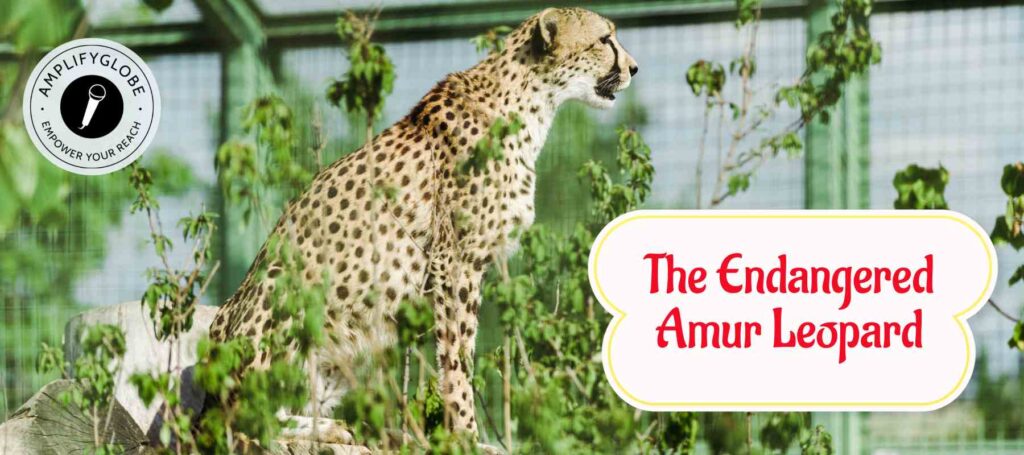Our planet is a treasure trove of biodiversity, housing a diverse array of species that have evolved over millions of years. However, this invaluable tapestry of life is under constant threat due to human activities, habitat destruction, climate change, and other factors. In this comprehensive blog, we will delve into some of the most endangered species on Earth, highlighting their ecological importance, the threats they face, and the urgent need for conservation efforts to safeguard their existence.
Find out the secrets behind the rich cultures of the Aymaraes, the Kazakh, the Sami People, the Ainu of Japan, the Adivasi and the Akha People.
The Importance of Biodiversity
Biodiversity is the backbone of our ecosystems, providing us essential ecosystem services such as clean air, and water, pollination of crops, and disease regulation. Each species plays a unique role in maintaining the balance of these ecosystems. However, human activities have led to unprecedented rates of species loss, resulting in a potential ecological crisis. By understanding and preserving endangered species, we can help maintain the delicate equilibrium of our planet.
The Most Endangered Species
1. Amur Leopard (Panthera pardus orientalis): With fewer than 100 individuals remaining in the wild, the Amur leopard holds the title of the world’s rarest big cat. Native to the Russian Far East and China, this stunning creature is threatened by habitat loss and poaching for its beautiful fur.

2. Sumatran Orangutan (Pongo abelii): The Sumatran orangutan faces the grim reality of being critically endangered due to habitat destruction driven by palm oil plantations and illegal pet trade. With only a few thousand individuals left, urgent measures are needed to protect their rainforest homes.
3. California Condor (Gymnogyps californianus): The California condor holds the title of the largest bird in North America and is critically endangered due to lead poisoning from consuming lead bullet fragments in carrion. Conservationists are working to save this magnificent bird through captive breeding and habitat protection.
4. Javan Hawk-Eagle (Nisaetus bartelsi): Native to Indonesia, this majestic raptor is on the brink of extinction due to habitat loss and illegal pet trade. Efforts are underway to protect its dwindling rainforest habitat and enforce stricter regulations against wildlife trafficking.
5. Yangtze Giant Softshell Turtle (Rafetus swinhoei): Also known as the “extinct-in-the-wild” turtle, this species survives just three known individuals, two in captivity and one in the wild. Habitat degradation, pollution, and overharvesting have pushed this ancient turtle to the edge of oblivion.
6. Golden Toad (Incilius periglenes): The tragic story of the golden toad symbolizes the effects of climate change and disease on amphibians. Native to Costa Rica, this species has not been seen since 1989, highlighting the swift and mysterious nature of amphibian declines worldwide.
Threats and Conservation Efforts: Most Endangered Species
Common Threats to Endangered Species
1. Habitat Loss and Fragmentation: Urbanization, deforestation, and agriculture lead to the destruction and fragmentation of natural habitats, leaving species inadequate space to thrive.
2. Climate Change: Rising temperatures, sea-level rise, and altered precipitation patterns pose a significant threat to species’ survival, causing shifts in habitats and disrupting ecological systems.
3. Poaching and Illegal Trade: The demand for exotic pets, traditional medicines, and wildlife products drives many species to the brink of extinction due to overexploitation.
Conservation Initiatives
1. Captive Breeding Programs: These programs aim to increase the population of endangered species by breeding individuals in controlled environments and reintroducing them into the wild.
2. Habitat Restoration: Efforts to restore and protect natural habitats are essential for providing endangered species suitable living conditions.
3. Legislation and International Agreements: Laws and agreements such as the Convention on International Trade in Endangered Species of Wild Fauna and Flora (CITES) play a vital role in regulating and combatting wildlife trade.
Individual and Collective Responsibility
Preserving endangered species requires collective efforts from governments, organizations, and individuals. Adopting sustainable practices, supporting conservation organizations, and advocating for policies that protect ecosystems are vital steps toward ensuring the survival of our planet’s most endangered inhabitants.
Conclusion
The plight of endangered species serves as a sobering reminder of the delicate interconnectedness of all life on Earth. The loss of any species reverberates through ecosystems, affecting everything from plant pollination to predator-prey relationships. By understanding the value of biodiversity and taking proactive measures to conserve these vulnerable species, we can strive to protect the fragile web of life that sustains us all. As stewards of this planet, it’s our responsibility to ensure that these remarkable species continue to share the Earth us for generations to come.